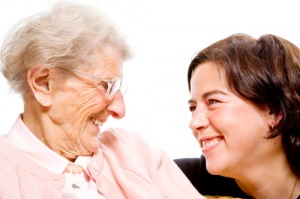“A life worth living” is the phrase we hear a lot these days when discussion moves to what life should be like for people living in aged care homes. It’s an international discussion and it takes on different flavours in each country.
In the US there is the Eden Alternative which began some years ago in the hands of Dr Bill Thomas who wanted to address the three “plagues” of long-term care: Loneliness, boredom, and helplessness. He devised a green, child friendly and homelike model of care that is being practiced in several organisations in Australia including DutchCare Ltd and in the Embracia Group (formerly ACSG).
Many countries have local initiatives that push forward into new ways of providing care for our elders. And not all of them are new.
About thirty years ago I travelled to Europe as many young Australians still do. I visited many countries and stayed for four months in Israel where I lived on a kibbutz as a volunteer. It was a memorable experience of community life.
The kibbutz I was sent to was Gvat, and at 1000 members it was a small village. It sat neatly in northern Israel about 30kms from Nazareth on a hot dry plain. Like most kibbutzim it was an agricultural community that began in the years after the Second World War. Some were older dating back to the early years of the 20th century.
Gvat had many older members who had farmed and established the community in struggling times of harsh summers and poor political and economic conditions.
Now however, many of these older members had poor physical health or had just become too frail to work out in the fields everyday. Yet they wanted to be of value and contribute to the wellbeing of the community. That was their ethic and their value as a person was tightly tied up with being productive and useful to the community.
So a solution had to be found.
One of the largest enterprises this modern kibbutz had engaged in was the manufacture of plastic piping for irrigation systems which they sold around the world. A large factory had been built on one of the fields and this had taken over as a major source of income for the kibbutz.
It was suggested that the older people could work here but some were not able to manage the heavy physical work of the factory. So the kibbutz community built a factory for them. They called it Hazrikah.
In this factory the old retired workers came each day to sit at tables and fit together the small pieces of the drippers that were needed for the irrigation systems. They sat for several hours or a whole shift as they could.
Many hours were spent as they worked, talking and discussing politics, the farm, local gossip, the economy and most of all remembering days when they stood in fields and worked the land. And they went home satisfied, contented they were still valuable. They mattered.
These people were still contributing to the wellbeing of their community and had a vital role to play in it. Most of all they were still a part of the life of the community. Their role had changed but their value had not. And this was recognised by the kibbutz.
There is a lesson here. In Australia can look to our older people as vital contributors who we can involve in life-giving projects that have ongoing importance to our community – if we have the imagination to see it.
I would like to see our aged care homes become vital places that house small enterprises that are self-supporting and engaging for the older people who live there.
At the moment we house them in inactivity and so we contribute to their illness and frailty. There is ample evidence of this in the science — use it or lose it. And most of them are losing it. Depression rates for people living in residential care are double those in the community.
What imagination can you bring to your situation? How can your older people get together to build, make, create, put together, sew, paint, cook, etc, etc. How can we structure it so that there is flexibility, productivity, fun and purpose to this activity?
Perhaps you can link in with some local businesses to construct a small enterprise on a commercial basis that benefits the local community and the older people who are aching to still be important enough to be taken seriously.
Is there a retired person with business acumen who can manage this fledgling enterprise with you and get it going? Get your heads together and give the people in your care a chance at a life worth living.
